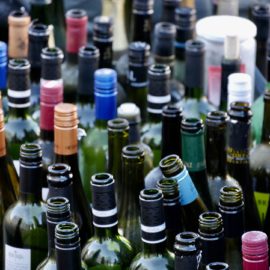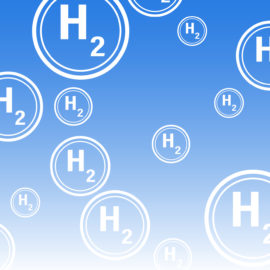
We are the front line. Climate change is hitting us as well as other places. We need to do more but…
We want to welcome our fellow earth scientists to Louisiana for this week’s American Geophysical Union conference. As a trained oceanographer and a hydrologist, we have been to this meeting many times, particularly during its tenure in San Francisco. San Francisco seemed like an ideal place for an earth science conference. Earthquakes are a near constant threat, the Pacific Ocean is stunningly beautiful, and the granite blocks of the Sierra Nevadas and volcanoes of the Cascades are close by. The Bay area has a wealth of scientists and engineers, leading universities, government centers, and technology companies. Louisiana, with its flat landscape, old architecture and decaying infrastructure, might seem less ideal for this kind of conference. However, look a little closer — the future of earth science looks a lot like Louisiana. Louisiana faces many of the challenges that earth scientists across the world are working to solve this century: climate change, sea level rise, food security, energy transition, landscape restoration and environmental justice. Situated in a sinking delta, in the wet subtropics, at the mouth of North America’s largest river, few areas are as vulnerable to climate change as Louisiana. This vulnerability is enhanced by a century of human activities that increased flooding and reduced fishery yields, among other impacts. In combination, these factors place compounding financial and emotional stresses on Louisianans. Across the world, scientists, planners, and everyday citizens are trying to understand the same question many are asking in Louisiana: How can we live in a landscape that is increasingly unstable?
theadvocate.com
We are trying to do something about it. The governor is working to make it hard for his probably republican successor to stop what he has started knowing their skepticism to climate change.
To slow the impacts of climate change, the state of Louisiana is undertaking a climate initiative with the aim to reduce greenhouse gas emissions to reach net zero by 2050, consistent with Paris Accord targets. Doing so will not be easy, and Louisiana’s initiative shows some of the challenges of this global effort. Louisiana’s emissions, among the largest in the country, come mostly from industrial sources. These facilities not only refine fossil fuels for energy use but also yield chemicals, metals, fertilizers and other products that are used across the world. There are ideas under discussion to meet the state’s climate goal, all of which require inputs from earth sciences to guide their effectiveness: developing renewable energy standards, increasing offshore wind energy, using satellites to locate carbon dioxide and methane leaks, and burying carbon dioxide deep underground.
The earth science community is working for solutions but they need us and all others to work with them.
The earth science community is increasingly recognizing that geohazards, particularly those caused by humans, often affect society’s most vulnerable communities. For example, In Louisiana, all too often marginalized communities experience the worst storm damage and have the most difficult time rebuilding afterward. Across the state there are conversations about how to reduce environmental injustices, cope with climate-driven migration, and address environmental health inequities. While there remains much work to do, solutions should be based on the best available science; lessons learned here can be valuable for communities across the world that face a stressed and a changing landscape. However, no one individual or organization can address all the earth-science challenges Louisiana faces. While we are proud of the work our organizations do to address some of these challenges, we are prouder still to be part of Louisiana’s earth science ecosystem. Louisiana’s coastal conference, which in non-pandemic years takes place over three days and has over 1,000 attendees, is an esteemed regional environmental conference. In addition to Louisiana’s traditional universities and laboratories, there are science-based nonprofits and state agencies that seek solutions to our state’s coastal challenges, high-schools and nonprofits that focus on water issues, and journalists who cover our publications, successes and failures. While there are many ongoing efforts in Louisiana, the state is far from perfect and we recognize that there is much to do. We hope that by converging at AGU we can all learn from each other, and enjoy Louisiana’s food and music too. We hope our fellow scientists return home with more than a set of Mardi Gras beads, and also carry back firsthand examples of a landscape on the front lines of the 21st century’s greatest earth science challenges.
Earth science is a course, if I go back to high school, where the earth is discussed. They see what the dangers are and hopefully will have real world solutions. I welcome them to New Orleans and, like the writer, hope they get more than a set of beads, which are being fazed out!



